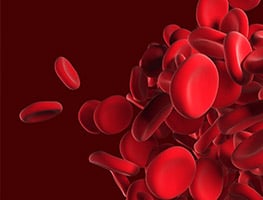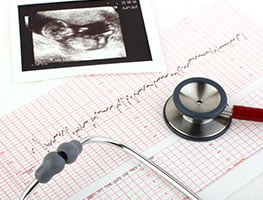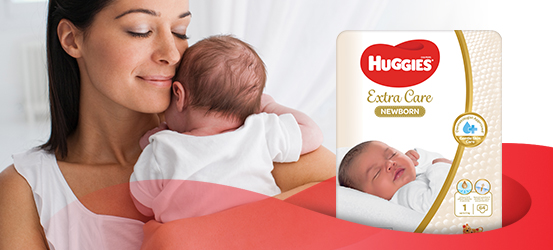It is thought that women who experience hyperemesis are less likely to miscarry. An elevation of pregnancy hormones causing the nausea is an indication that perhaps their pregnancy is more stable. The true cause for hyperemesis is still not clearly understood, although fluctuating hormone levels undoubtedly play a role.
The only 100% guarantee is that there is almost complete relief of nausea and vomiting after the baby is born.
In mothers who are experiencing hyperemesis, many worry that their baby will not be receiving the nutrients they need to grow and develop optimally. But in the majority of cases, the baby does just fine. Nature has designed them to be very proficient in obtaining what they need first, so more commonly it is the mother that is the one who misses out. In situations where a mother is unable to keep any fluid or food down, hospitalisation becomes necessary.
Risk factors for hyperemesis
-
Multiple pregnancy where a mother is carrying two or more babies
-
Gestational diabetes
-
Hyperthyroidism – this is a condition where the thyroid gland is underactive and not functioning as it should be
-
In mothers who have a history of hyperemesis gravidarum in a previous pregnancy
Signs and symptoms of Hyperemesis Gravidarum
-
Severe, continual vomiting
-
Dehydration and a decrease in urine output
-
Sleepiness, lack of energy, fatigue and inability to focus on anything other than the feelings of nausea
-
Headaches, feeling confused and faint or lightheaded
What’s the point of It?
Some researchers believe that morning sickness is, in itself, a protective built-in mechanism preventing the mother and the foetus from contracting food borne illnesses. Common aversions are to raw meat, raw or uncooked fruit and vegetables, or foods with a strong odour. This is all fine, however in hyperemesis it’s as if the body has taken this little message to the extreme. Intractable vomiting, dehydration and feeling miserable are common signs.
Treatment for Hyperemesis Gravidarum
-
Occasionally hospitalisation and rehydration with intravenous fluids is necessary. This is commonly done with a solution of water, salts or electrolytes and glucose. Correcting electrolyte imbalance is the objective of treatment.
-
Supplements may become necessary for women who have developed low potassium levels, and these are administered as an additive through an intravaenous fluid drip.
-
Some women require feeding via a nasogastric tube. This is a fine, silicone tube that is inserted through one of their nasal passages, over the back of the throat and down into their stomach. Energy dense, easily digested, highly fortified solutions are slowly “drip” fed directly into the stomach.
-
Vitamin B6 ‘Pyridoxine’ can be prescribed and is effective in alleviating nausea. Folic Acid and other vitamin, iron and mineral supplements are also necessary if these nutrients are not being absorbed because of continual vomiting.
-
Antacids are also an option and reduce the acid production in the stomach. Occasionally medication to hasten stomach emptying is also prescribed.
-
Anti-emetic (nausea and vomiting) drugs are commonly prescribed. These may be given as injections or via a drip.
-
Anti-histamines are another commonly prescribed family of medications.
-
Avoidance of foods, which start the vomiting cycle. Often, cold, bland foods are better tolerated than hot food. Heating food generates more of a smell and this alone can be sufficient to start the cycle of vomiting again.
-
Referral to a dietician who specialises in obstetric care and treatment. Dietary planning around maximising kilojoule and nutrient intake through foods which are more palatable and less likely to lead to vomiting is the goal of dietetic management.
-
Sometimes lifestyle changes are necessary. For women who work in the food industry, who live or work where the smell of food is a constant trigger, or whose lifestyle is based around food generally, changes or modifications may become necessary.
-
Psychological support is often necessary. Continual nausea and vomiting can lead to feelings of depression. Short periods of nausea can make anyone feel miserable though when it is continual and does not abate, this wears down the most optimistic of people. Anti-depressant medication is only considered if the risks to the mother or her baby of her hyperemesis continuing are greater than the potential side effects of taking medication.
-
For some women, combination therapies of traditional Western treatment with alternatives such as acupuncture and/or acupressure have been found to be useful. Though from an evidence-based perspective, there is little science to support their usefulness.
-
Ginger in all forms; tea, soft drinks and beverages, biscuits, sweets, crystallised and in cooking can bring relief to some women.
-
Hypnosis, deep muscle relaxation, positive imagery and visualisation can be effective. But none of these can help with re-hydration, only coping with feelings of nausea and hopefully, improve the mother’s ability to retain food and fluids.
-
Sucking on ice-cubes, chips of ice or sips of iced water may be all that can be tolerated at times. Electrolyte replacement solutions, when prepared as per manufacturer’s recommendations are a useful, short-term option to replace the body’s electrolyte balance when vomiting has been continual.
-
Eating crackers, dry toast and very bland easily digested foods in small amounts will help to maintain blood sugar levels and combat nausea.
What’s the Difference between Pregnancy Nausea and Hyperemesis Gravidarum?
|
Normal Pregnancy |
Hyperemesis Gravidarum |
|
Feeling nauseous, occasional vomiting |
Feeling nauseous the majority of the time |
|
Sometimes the nausea is accompanied by vomiting but not always |
Nausea accompanied by severe vomiting |
|
Feelings of nausea come and go, so there is some respite |
Continual feelings of nausea, which continue for most of the day and night – little relief |
|
Some retention of food and fluids, i.e. not everything taken into the stomach is vomited back |
Vomiting so severe it means that no foods or fluids are being retained; everything is coming back up |
|
Occasional vomiting, which does not have an effect on the mother’s hydration levels |
Vomiting to the point of fluid compromise; signs of dehydration become present |
What’s important about hyperemesis gravidarum is that it is not just passed off as “one of those things” during pregnancy. It can become a serious health issue and compromise the health of a mother and her baby if left untreated.
To feel nauseated is relatively normal in early pregnancy, but it almost always settles towards the second trimester. Hyperemesis is more than this and causes real misery to pregnant mothers.



















